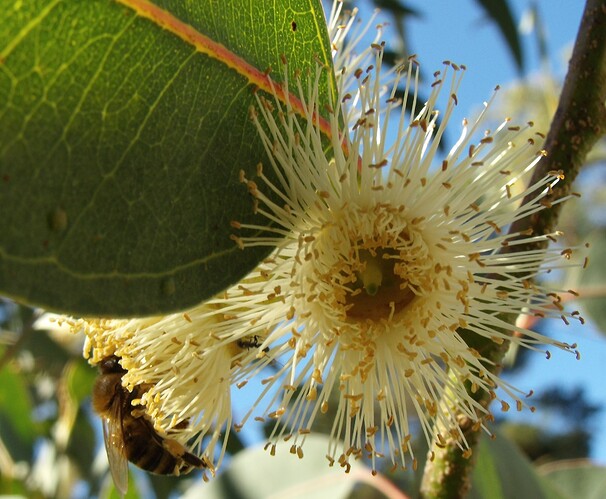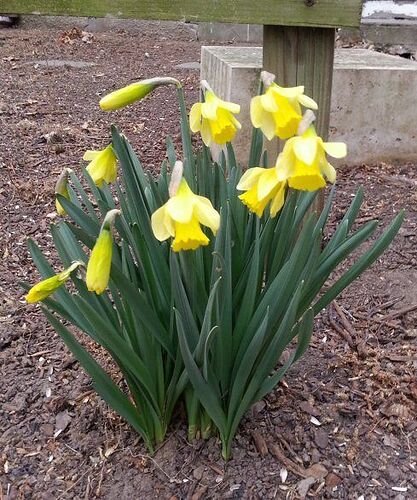If you haven’t seen it, I’ve been maintaining a list of terminology from this thread.
I think it’s a good indication that our knowledge is never perfect, just in line with current knowledge.
I hope Darwin (and equally important pioneers in this field) would be thrilled that the theory is sound, but still needs polishing.
Strangely i quite like them,
Oh, big subject, varying from county to county at times.
I am now looking forward to SSIW4K.
I did look a couple of weeks ago and noted it is still growing, many thanks Craig it’s a great piece of work.
Rwan hyn, mae’n hawdd i dweud bod fi edrych ymlaen i’r cyhydnos gwanwyn.
Right now, it’s easy to say that i look forward to the spring equinox.
pan golau dydd a thywyllwch yn un hyd - when daylight and darkness are the same length.
It appears once again to be not quite perfect, the equinox is when the sun crosses the mid point between the equator and pole (due to the Earth’s wobbling orbit).
But when looking at sun rise/set tables i find the equal light/dark situation arrives on the 17th March, either way, spring approaches and we can look forward to the country turning green along with other colours.
I will trying to improve on photo’s and commentary of last years wildlife and more, (there’s optimism).
Cheers J.P.
A question to @ramblingjohn or anyone who’s familiar with the habits of the birds. Is it normal for ducks to live on the snow? There are lots of ducks just in the centre of our city, for some reason, and they seem to have been here for about a month now. Kind people feed them, but I’m very worried that they might freeze or something. It’s still cold here. Shouldn’t ducks come back a bit later in the spring?
Could that be a by-product of the weird weather due to global warming etc.? We had sun and not too cold yesterday, frost this morning and warm sunshine recently, followed by the snow!!. Everything is getting caught out! Creatures find they are warm and set out for their summer home, only to discover it is freezing!!
I remember (i think it was 1983 ) when it got seriously cold on the farm, the geese were quite happy walking around on the frozen snow, we fed the sheep once a day, and broke ice on a pond (with a large iron bar as the ice was thick) to get the sheep a bucket of water, their fleeces were frozen with snow on them and yet they survived, it’s amazing what wildlife can withstand so long as it gets food.
Heddiw (on the Oxford ramble).
gŵydd wyllt - Greylag goose.
Carn yr ebol - Colt’s foot.
Riwbob - Rhubarb.
Hwyaden ddanheddog gwrywaidd - male goosander.
Hwyaden ddanheddog benywidd - Female goosander.
Ydfran/Ydfrain - Rook/s (mae nhw yn dechrau codi nythod - they are starting to build nests).
Mwydyn - Earth worm. (braidd yn hir - fairly long).
galwad cynnar for today.
Gair newydd: Hiliogaeth - New word: offspring/descendants.
Cheers J.P.
New here. It’s brilliant. Thank you. I’ve just seen the Northern Lights for the first time n my life. No pictures though, sorry.
We see them often here in Yr Alban, despite being near the west coast, but I am feeling a bit of an idiot, as the media are full of gorgeous pics, some taken far to the south, some in Wales, and I didn’t notice them last night!!!
Hydref blodeuyn ac gwenynen. (Autumn flower and bee)
This is an image of a cup gum flower in my back yard in the Adelaide Hills, They provide nectar for the bees when there is not much else around as it is usually pretty dry around here this time of year.
Mwynhau!
Ein mwy ffotograff.
The botanical name for this tree is Eucalyptus cosmophylla for those who are interested.
Normally, here in mid-Missouri (USA), Spring comes a bit later than it is this year. We usually have daffodils rather late in March. (One reason I like them so much, I think - they tend to be blooming around my birthday!) Anyway, as I mentioned, Spring is coming quite early this year - and this is what we found this morning (March 7)!.
We have a few blooming elsewhere, too, and LOTS more getting ready to bloom. Yay!
As spring approaches many birds start to look their most colourful.
iâr ddŵr - Moorhen.
Hwyaden lwyd gwrywaidd - male Gadwall (note missing feathers from its chest, i’m not sure if this is getting new feathers, the result of fighting or pulling them out to line a nest). This Hwyaden lwyd has an interesting problem.
Hwyaden lwyd gwrywaidd gyda Hwyaden wyllt benywaidd.
The gadwall thinks it is a Mallard (this maybe because it was raised by a mallard when an egg was laid in the others nest, or when very young chicks got mixed up, this results in one species having the behaviour of the other species and has been noted happening in the wild).
Ffesant ceiliog - cock phesant (this came close enough to show how bright these get in the spring, note feathers on back of head almost forming what look like horns).
As usual click on images for full size.
Cheers J.P.
That is a gorgeous photo of the ffesant ceiling.
What fabulous photos, John! I love the Moorhen, and the phesant is spectacular!
For other important pioneers in the Field - a good Welsh link, held in very high regard scientifically would be Alfred Russel Wallace from Usk - known as the father of biogeography. He co-wrote a lot of things with Charles Darwin and independently conceived the theory of evolution through natural selection. Without his contribution to extensive mapping of world species during the 19th century, Darwin’s origin of the species wouldn’t have been possible.
I had a friend who kept chickens. We had an incubator at work and another friend used it to hatch duck eggs. He gave a fluffy duckling to the first friend, who also, from another source, got a female, when he found that the first was Donald not Dilly.
But Donald had grown up with the hens. He was sure he was a cockerel and chased after the hens eagerly, ignoring poor Dil. He never went near the pond.
Then, one day, my friend was trying to get the birds back in their safe coop for the night, and they ended up trapped by the pond. Donald jumped in and found he could swim, so set off across it. All the hens followed him and my poor friend had terrible trouble fishing them out before they drowned!!
This is an absolutely true story!!
Great story:) Just yesterday I read something about a lamb who decided he is a sheep-dog, so now he refuses to be herded and, instead, tries to herd other sheep.
When I was a child, we kept ducks and chickens, but I don’t remember them being friendly with each other!
That’s why the relationship was so odd! Usually birds imprint on the first being they see, which is usually Mam or Dad! I think Donald originally may have imprinted on blue jeans as this happened to a lot of chicks raised in my office, but we may have had the chicks as well as him.
My worst experience during that time was trying to look after a brood of quail which hatched when their owner was off for two days. I carefully fenced off part of the pen and gave them a shallow dish of water, while the bigger birds got a deep water trough.
Nobody told me that quails burrow!! I did not think to research the habits of quail!! They all dug their way under my fence that night and I came in next morning to find every last one of them dead in the deep water trough and some of the other birds not well, due, I think to drinking polluted water!!
I was never allowed to be in loco parentis again!!!
Oh, that must have been so sad!
I remember the imprinting thing - chickens and ducks were my responsibility, usually, so I was their Mom and I remember them following me around:)
When I was in college (oh so many years ago) we had a very fine biology department. One of the things you would always see in the spring were some of the biology students being followed around on campus by “their” ducky ‘offspring’. Rather funny actually, but we all (even not in the sciences) learned what imprinting was all about.


